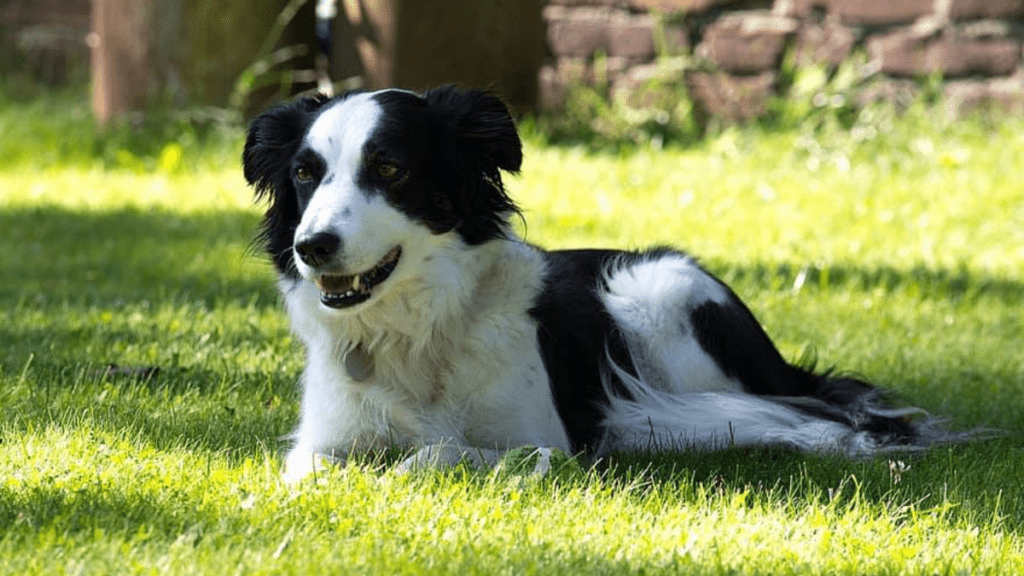Summers are way too short in Minnesota, and as fellow dog owners we try to take full advantage of every nice day. But dang has it been hot and humid the last couple of months! Our poor pups have been cooped up indoors way more than we (or they!) would like. We hate to see them stuck inside when all they want to do is run. So how can you enjoy the longer days and warmer weather without putting your dog at risk?
Water!
The first and most important thing to remember is to always have fresh water available for your dog. Dehydration occurs much too often in our pets. It’s actually pretty easy for a dog to become dehydrated: dogs lose heat by panting, and this method causes them to lose large amounts of body fluids in a short amount of time. To make matters worse, dehydration can be hard to recognize before a pet reaches emergency status.
If your dog or cat is spending ample time outside, keep a second water bowl outside of the house. Don’t forget to change the water at least once a day. Water bowls are basically breeding grounds for bacteria and viruses, so protect your pet by keeping their water bowls clean and their water fresh.
If your dog or cat is spending ample time outside, keep a second water bowl outside of the house. Don’t forget to change the water at least once a day. Water bowls are basically breeding grounds for bacteria and viruses, so protect your pet by keeping their water bowls clean and their water fresh.
Heat Exhaustion & Heat Stroke
Veterinary practices see many cases of heat exhaustion and heat stroke in outdoor pets during the summer months. Heat exhaustion occurs when a pet’s body temperature increases above normal; this condition (if not addressed) can lead to heat stroke. Excessive panting is usually the first warning sign of heat exhaustion. If you suspect that your pet may be experiencing heat exhaustion, treatment is pretty straightforward. Get your pet out of the heat and humidity and into an air conditioned space. If no air conditioning is available, at the very least place them in front of a fan. Offer cold water, and place cool, wet compresses on your pet’s neck and armpits. It may also help to wet your pet’s ears and paw pads with cold water.
Heat exhaustion that goes unnoticed may progress to heat stroke. Heat stroke typically results from being over-active in hot or humid temperatures, having limited access to fresh water or shade, spending time in a parked car, or any combination of the aforementioned scenarios. Signs of heat stroke include heavy panting, drooling, nausea and vomiting, diarrhea, weakness and collapse. If you think your pet is suffering from heat stroke, use cold water to cool their body down, and immediately pay a visit to your nearest emergency clinic. Your pet is probably going to need IV fluids, a cold water bath, and ongoing monitoring. The sooner you notice heat stroke, the better chance that treatment has to be successful.
Heat stroke can be deadly, but it’s so easy to avoid! Don’t exercise your dog when temperatures are high, and avoid walks and activity during the hottest part of the day. Make sure your pets always have access to fresh water. On days when temperatures are above 70 degrees, don’t leave your pet in your car, no matter how short your errand is going to be.
Heat exhaustion that goes unnoticed may progress to heat stroke. Heat stroke typically results from being over-active in hot or humid temperatures, having limited access to fresh water or shade, spending time in a parked car, or any combination of the aforementioned scenarios. Signs of heat stroke include heavy panting, drooling, nausea and vomiting, diarrhea, weakness and collapse. If you think your pet is suffering from heat stroke, use cold water to cool their body down, and immediately pay a visit to your nearest emergency clinic. Your pet is probably going to need IV fluids, a cold water bath, and ongoing monitoring. The sooner you notice heat stroke, the better chance that treatment has to be successful.
Heat stroke can be deadly, but it’s so easy to avoid! Don’t exercise your dog when temperatures are high, and avoid walks and activity during the hottest part of the day. Make sure your pets always have access to fresh water. On days when temperatures are above 70 degrees, don’t leave your pet in your car, no matter how short your errand is going to be.
Hot Asphalt
It’s easy for us to forget how hot asphalt gets when the sun is shining, because our feet are protected with shoes. Pet paw pads can become burned and blistered from walking on the hot ground. This is another reason why it’s best to avoid walking during the hottest part of the day. Whenever possible, plan your walks in areas that have grass or dirt paths. A good rule of thumb to follow: if the ground is too hot for you to walk barefoot, then it’s too hot for your pet.
In Minnesota, we’re usually blessed with very pleasant summers and agreeable temperatures. Our beautiful climate allows us ample opportunities to spend time in the great outdoors with our pets in tow. Almost every summer though, we have to suffer through some hot, muggy days. If your pet is dying to get some exercise but it’s just plain disgusting outside, try having some fun in the water. Lakes are definitely not in short supply around here! If you’d rather hang out inside while your dog goes swimming, check out one of the indoor doggy pools that are located around the Twin Cities!
*If your pet will be spending time in outdoor lakes, ponds, or other bodies of water, please make sure your pet is up-to-date on their preventative care! Stagnant water puts any animal at risk for certain viral or bacterial illnesses like leptospirosis. Ticks and mosquitoes tend to hang out in areas around water sources, so monthly preventatives are especially important. And don’t forget to monitor for blue-green algae, which is toxic to both animals and humans.
*If your pet will be spending time in outdoor lakes, ponds, or other bodies of water, please make sure your pet is up-to-date on their preventative care! Stagnant water puts any animal at risk for certain viral or bacterial illnesses like leptospirosis. Ticks and mosquitoes tend to hang out in areas around water sources, so monthly preventatives are especially important. And don’t forget to monitor for blue-green algae, which is toxic to both animals and humans.







